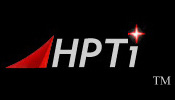Industry News
Power
-
01/09/2004
EPA Administrator
Tells Power Companies to Invest In Clean Air
Environmental News
"It's time to start
cleaning up." EPA Administrator Mike Leavitt, addressing a Board of
Directors meeting of the Edison Electric Institute, told the
nation's power company officials their industry must begin investing
now to reduce emissions of sulfur dioxide (SO2), nitrogen oxides (NOx)
and mercury from power plants.
Leavitt noted that
EPA last month sent letters to the governors of 31 states affirming
that more than 530 counties were unable to meet new health-based
ozone standards. "Many of those counties have unhealthy air through
no fault of their own," he said, "It's because they live downwind
from one or more coal burning power plants."
In December 2003, EPA
proposed a suite of integrated air actions to significantly reduce
current levels of power plant emissions. The Interstate Air Quality
proposal would utilize a cap and trade program based on EPA's highly
successful Acid Rain Program to cut emissions of SO2 by 70
percent and NOX by approximately 65 percent from today's levels.
The Agency's first ever proposed rule to regulate mercury emissions
would cut by
70 percent the estimated 48 tons of mercury
emitted each year by
coal-burning power plants in the United States.
"I intend to be very
aggressive in keeping these proposals on a tight, fast track. In
return, I ask you to be equally aggressive in committing to cleaning
up the air America breathes," said Administrator Leavitt.
"These rules
constitute a move away from a command-and-control style regulation,
adopting a market-oriented cap and trade system where the operators
of the power plants find the best ways, the fastest ways, and the
most efficient ways to make the reductions," Leavitt added. "It
provides incentives to do more than required and serious
market-imposed sanctions for those who do less."
SO2 and NOx are key
contributors to fine particles (PM2.5) and ground-level ozone. Fine
particles can pose serious health risks, especially for people with
heart or lung disease (including asthma) and older adults and
children. Ground-level ozone can irritate the respiratory system,
aggravate asthma, reduce lung capacity and increase people's
susceptibility to respiratory illnesses like pneumonia and
bronchitis. Mercury is a toxic, persistent pollutant that Americans
are exposed to primarily through eating mercury-contaminated fish.
Source - EPA

